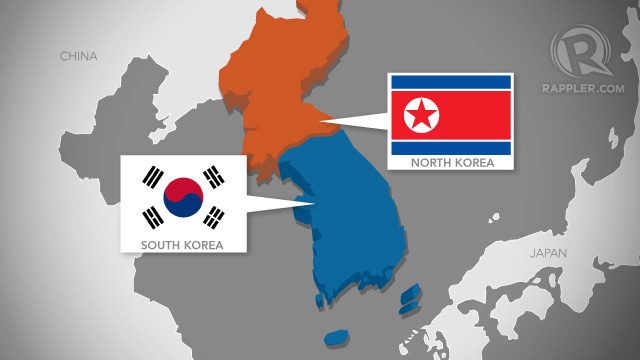SUMMARY
This is AI generated summarization, which may have errors. For context, always refer to the full article.

SEOUL, South Korea – The US flew four F-35B stealth fighter jets and two B-1B bombers over the Korean peninsula on Monday, September 18, in a show of force after North Korea’s latest nuclear and missile tests, South Korea’s defense ministry said.
The flight was to “demonstrate the deterrence capability of the US-South Korea alliance against North Korea’s nuclear and missile threats”, the ministry said in a statement.
They were the first flights since the North conducted its sixth and most powerful nuclear test on September 3 and staged an intermediate-range missile test over Japan last Friday, sending regional tensions soaring.
The US jets few alongside four South Korean F-15K jet fighters as part of “routine” training, the statement said, adding that the allies would continue such exercises to “improve their joint operation capabilities against contingencies”.
The previous such flights were on August 31.
Separately, China and Russia began a joint naval exercise east of the Korean peninsula.
The drill will be held in waters between the Russian port of Vladivostok and the southern part of the Sea of Okhotsk, further north, the Chinese defence ministry said.
The purpose of the exercise was not immediately clear and the ministry did not indicate its duration.
The UN Security Council last week imposed a fresh set of sanctions on North Korea over its missile and atomic weapons programmes, though Washington toned down its original proposals to secure support from China and Russia.
Moscow backs Beijing’s proposal for a freeze on North Korea’s nuclear and missile tests in exchange for a suspension of US-South Korea military drills which China blames for fanning regional tensions.
US ambassador to the UN Nikki Haley has rejected the proposal as “insulting” and said it was time to ratchet up the pressure on North Korea by enacting the “strongest possible measures”.
North Korea’s weapons drive is set to dominate US President Donald Trump’s address to the UN General Assembly later Monday and his meetings with South Korean and Japanese leaders this week.
Tensions flared when Kim Jong-Un’s regime tested what it termed a hydrogen bomb many times more powerful than its previous device.
The North also fired a ballistic missile over Japan and into the Pacific last Friday, responding to the new UN sanctions with what appeared to be its longest-ever missile flight.
Trump and South Korean President Moon Jae-In spoke by phone Saturday and vowed to exert “stronger pressure” on the North, with Moon’s office warning that further provocation would put it on a “path of collapse”.
Trump has also not ruled out a military option, which could leave millions of people in the South Korean capital – and 28,500 US soldiers stationed in the South – vulnerable to potential retaliatory attack.
Trump’s National Security Advisor H.R. McMaster has said the US would “have to prepare all options” if sanctions prove insufficient to stop the North’s weapons drive. – Rappler.com
Add a comment
How does this make you feel?
There are no comments yet. Add your comment to start the conversation.